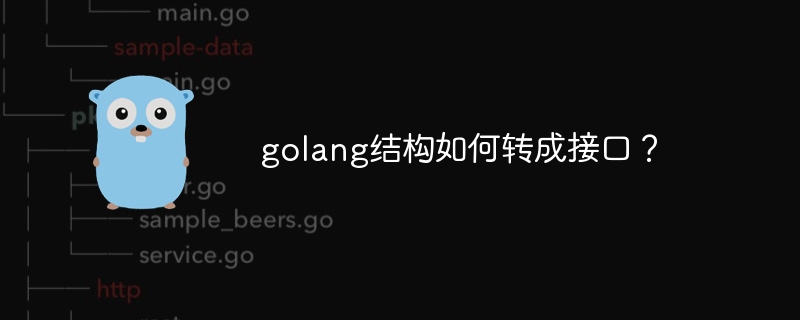
In Go, you can convert from a structure to an interface through type assertions. The syntax is value, ok := value.(Type), where value is the variable or expression to be converted, Type is the interface type to be converted, and ok is a Boolean value indicating whether the conversion was successful. For example, you can convert the User structure to the fmt.Stringer interface and use the ok value to determine whether the conversion was successful.

Use type assertions in Go to convert from a structure to an interface
In Go, type assertions allow us to convert from a type to another compatible type. For converting structs into interfaces, we can use the built-in type assertion mechanism.
Syntax
value, ok := value.(Type)
Where:
value is the variable or expression to be converted. Type is the interface type to be converted to. ok is a Boolean value indicating whether the conversion was successful. Practical
The following is a practical case showing how to convert a User structure into a fmt.Stringer Interface:
package main
import (
"fmt"
)
type User struct {
Name string
Age int
}
func (u User) String() string {
return fmt.Sprintf("Name: %s, Age: %d", u.Name, u.Age)
}
func main() {
u := User{Name: "John", Age: 30}
// 转换为接口
if v, ok := u.(fmt.Stringer); ok {
fmt.Println(v) // 输出:Name: John, Age: 30
}
}Note:
User type implements the fmt.Stringer interface, so the conversion is valid. ok A Boolean value indicating whether the conversion was successful. If the conversion fails, it will return false and the value will be nil. The above is the detailed content of How to convert golang structure into interface?. For more information, please follow other related articles on the PHP Chinese website!




